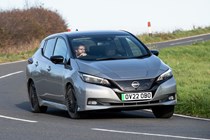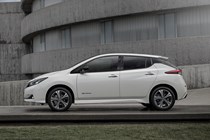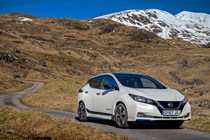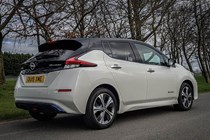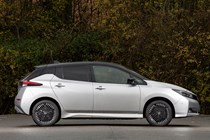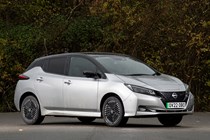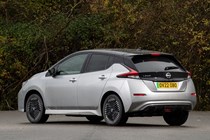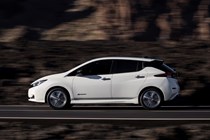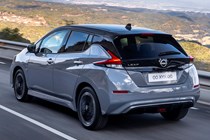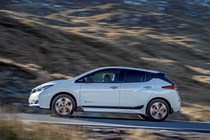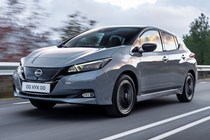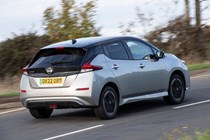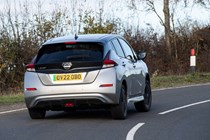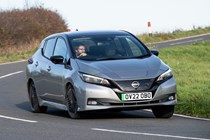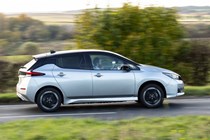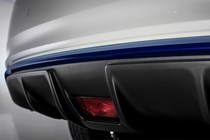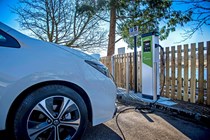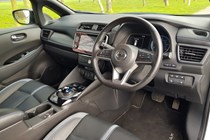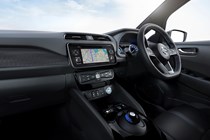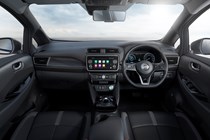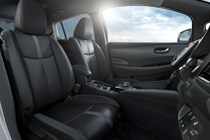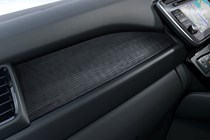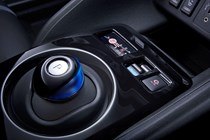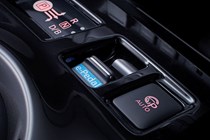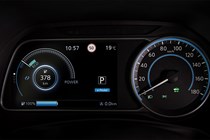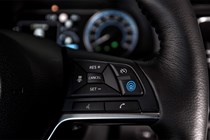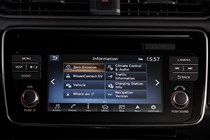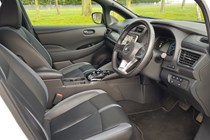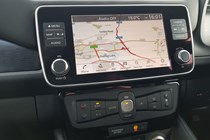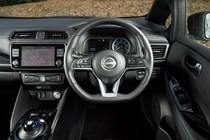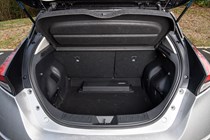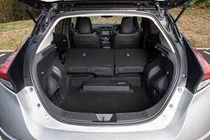
Nissan Leaf engines, drive and performance
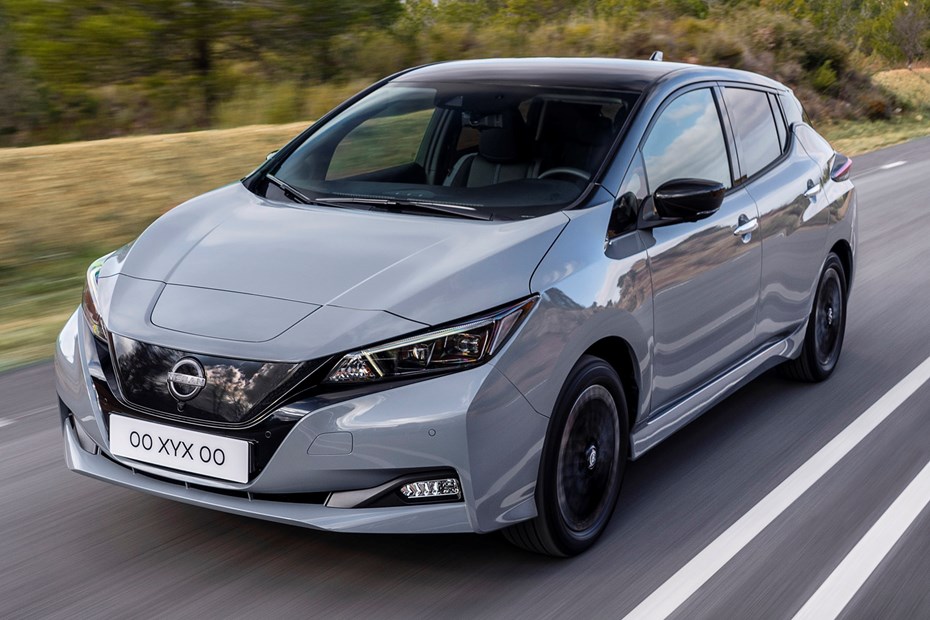
- Quick acceleration and instant response
- Hard driving seriously dents maximum range
- Not particularly engaging to drive
Electric motor performance
The second-generation Leaf is a big improvement over the original model in many ways – but the overwhelming ease of the driving experience is much the same. You simply pop it into Drive with the dainty little puck-shaped gear selector and go.
The transmission is single-speed, so it functions like a super-smooth automatic, while the 39kWh version’s electric motor’s 150hp and 320Nm of torque produces plenty of everyday performance. It’s nippy with a 7.9-second 0–62mph acceleration time, although its top speed is capped at 89mph to help preserve battery life.
The more expensive 59kWh variant gets a more powerful electric motor with 217bhp and 340Nm of torque. The extra grunt trims the Leaf’s 0–62mph down to a warm-hatch troubling 6.9 seconds and increases its top speed to 98mph.
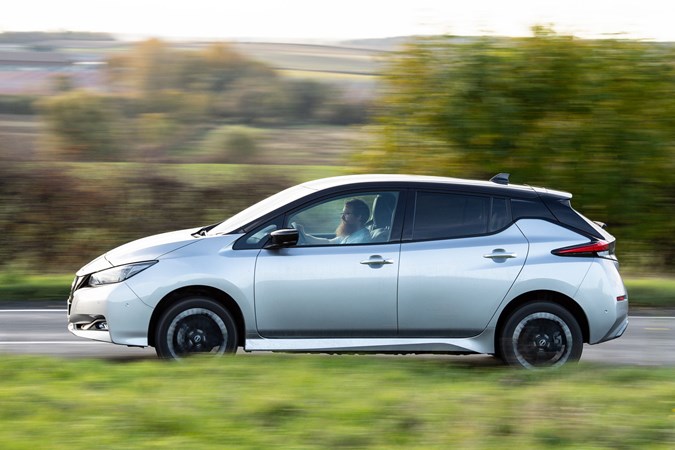
Both powertrains also feature Nissan’s E-Pedal one-pedal driving mode. This essentially removes the need to use the brake pedal by activating the car’s regenerative brakes the second you lift your foot off the accelerator.
It takes a while to get used to, as it’s programmed to react to severity rather than position. So, if you snap the accelerator shut sharply, the car will come to a correspondingly sharp halt. Once you’ve learnt its quirks, though, you’ll find yourself only resorting to the disc brakes in emergencies. And, like all good driver assistance systems, it can be deactivated with the flick of a switch if you don’t like it.
What’s it like to drive?
Pleasant enough but very far from involving or exciting.
At low speeds, the Leaf feels rather quick, as 100% of the electric motor’s torque is available immediately. And unlike the previous-generation Leaf, the follow-up model doesn’t run out of steam once you’re away from the city. It accelerates strongly up to the UK motorway speed limit, and there’s enough left in reserve to confidently overtake – especially with the 59kWh variant.
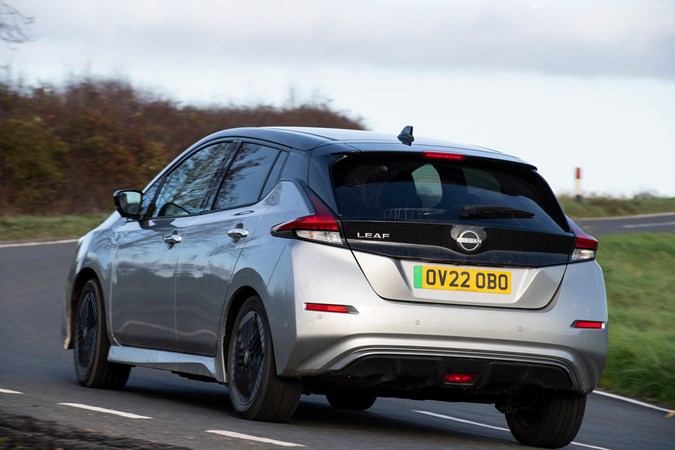
The chassis delivers safe and predictable responses, and is capable of taking corners at reasonably high speeds when required. This is actually useful for maintaining momentum in order to maximise driving range, so don’t laugh too much at the idea.
However, the most recent versions we’ve driven have had very light and vague-feeling steering, which certainly doesn’t encourage you to press on. And if you try to use all of the power of the punchier model from low speeds in the wet you can also expect the front of the car to become a little squirmy, as tyres on the driven front wheels struggle to manage the instant torque.
Still, body roll is contained well enough – helped by a small 5mm reduction in the Leaf’s centre of gravity compared with the original version – so your passengers shouldn’t get thrown about too much during more aggressive cornering.
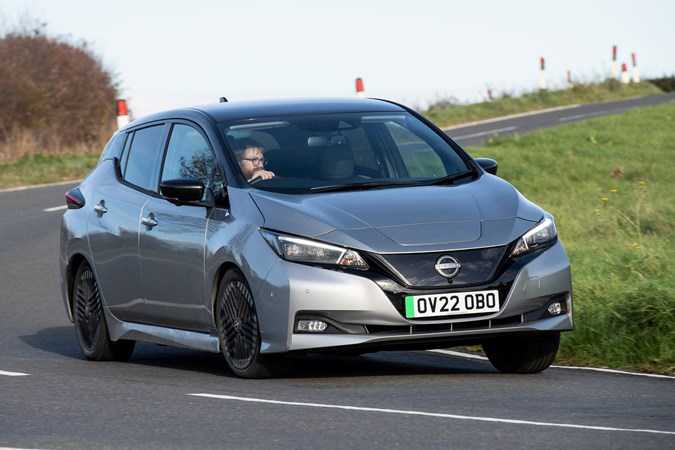
The Leaf is also a reasonably comfortable car, with suspension tuned to suit UK roads giving it the ability to absorb bumps and ruts calmly and without the overly brittle feel of some more modern electric cars. Relatively small 17- and 18-inch wheels contribute to this.
Nissan has worked to further improve the already impressive refinement – adding additional sound isolation to remove noises that would usually be masked by the racket of a petrol or diesel engine – and this is now a serene and quiet machine on both long and short journeys. Very relaxing.
Overall, as family transport, it does just fine.


